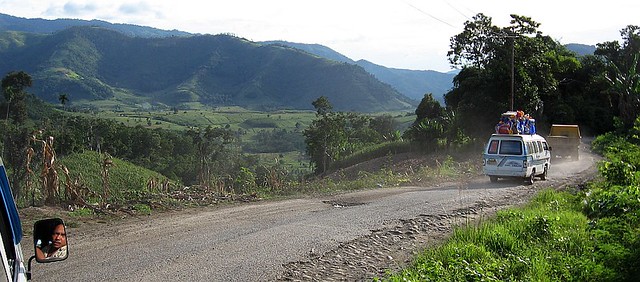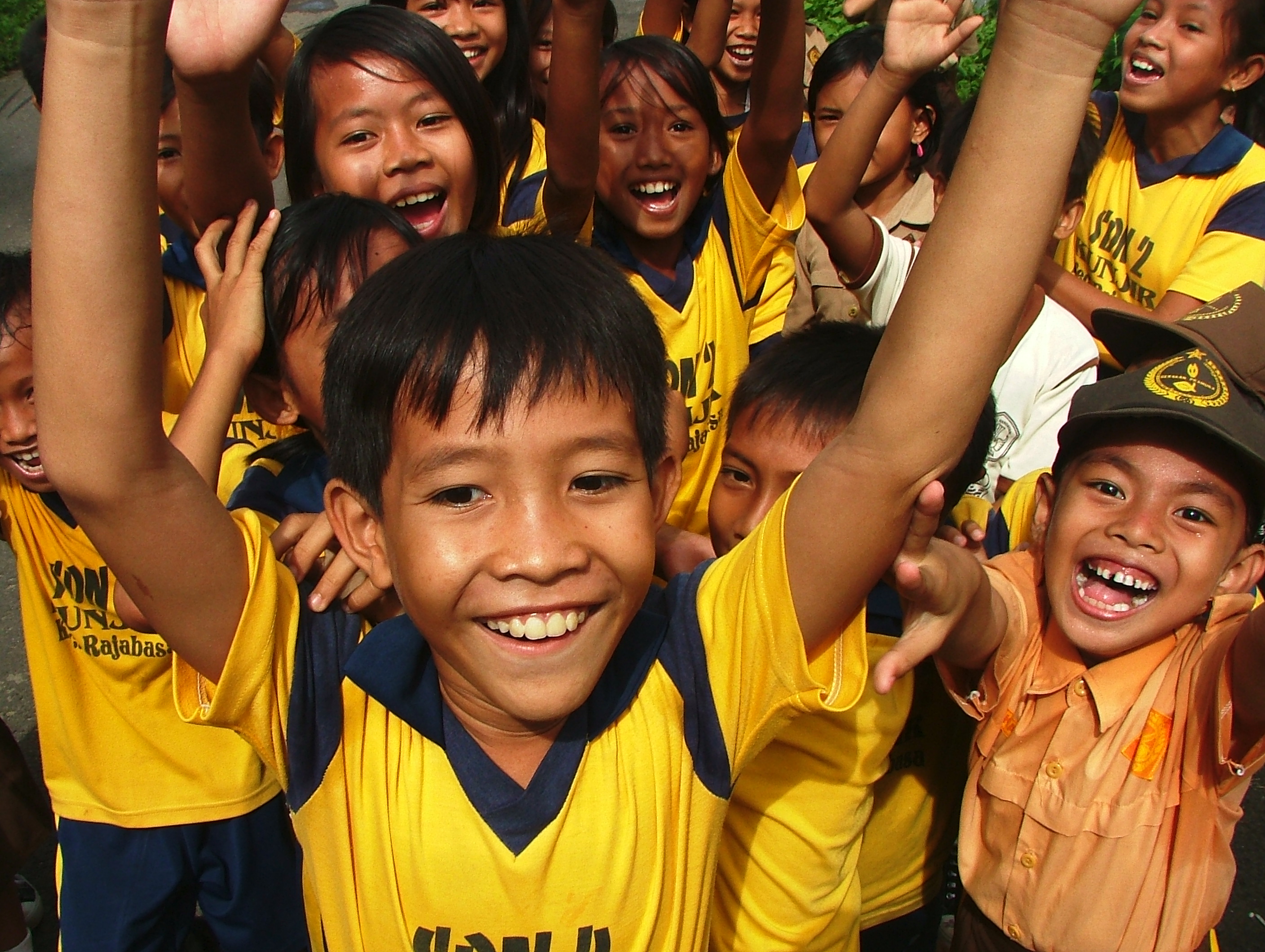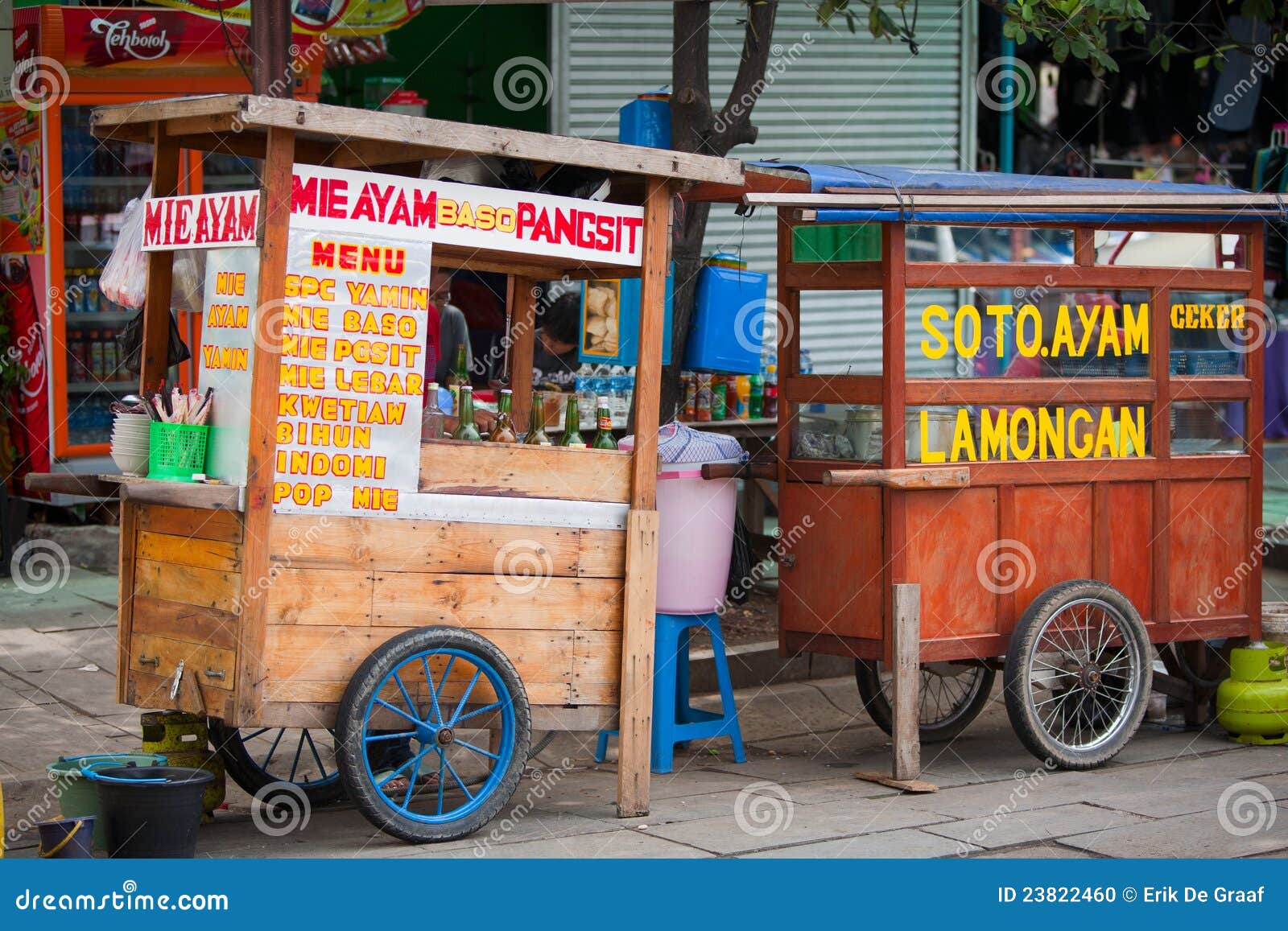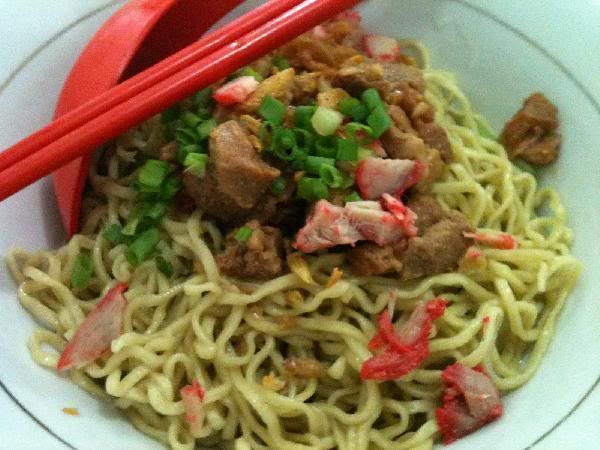Berastagi

From Medan I was headed to Berastagi, several hours' drive inland. Luckily my flight arrived in the morning so I had plenty of time to make it to Berastagi by nightfall. On the down side the trip would be my shortest of the Sumatran bus rides. On a side note: Sumatra is the world's sixth largest island. If you have traveled on SE Asian buses or have read many blog posts you will likely know how long the journeys take. The travel time on Sumatra's narrow, winding, pot-hole-ridden roads seemed to be even longer than average.
This particular bus ride was tolerable - it wasn't bursting at the seams with passengers and the cool mountain air near Berastagi was a refreshing change. Partway though the ride I noticed a large sticker on the top of the bus windshield: "Reckless and Dangerous." What the hell? Not exactly the words I want to read when we are whizzing past trucks on the 1.5 lane "highway." The driver sure seemed to get a kick out of passing other vehicles, and I made it there in one piece, so I'll applaud his skill (that is if you consider reckless driving to be a skill).
 |
| This doesn't exactly look like a highway to me! |
 |
| Ah, what a lovely traffic jam on the Trans-Sumatra "Highway;" I hope to avoid this mess! |
Berastagi seemed like a logical stopping point for me. The two main attractions are Sibayak and Sinabung, volcanoes typically agreeable enough for tourists to hike. It is also along the way to Lake Toba, which would be my next destination.
After a pre-dawn wake up in Singapore, my flight to Medan, getting from the airport to the city, and the ride to Berastagi, I was, as the Scots say, knackered (for us Americans, exhausted). I still had enough energy to check out the town before nightfall though. I got my new Indonesian SIM card sorted and took a walk up a small hill overlooking the town. I'd like to show you some beautiful pictures, but to my dismay I discovered my camera had broken sometime between the last photo in Singapore and my arrival in Berastagi. There were no camera shops in town and it probably would have cost more to fix than it was worth - alas, no pictures for Indonesia!
 |
| Berastagi is just south of Medan and north of Lake Toba |
 |
| A view of Berastagi from Gundaling Hill. This is where I realized my camera was broken, but thanks to the Internet I can still get the pictures! |
The following day I made a semi-early start for the climb to Sibayak. My guesthouse had a warning advising hikers to use caution when on the volcanoes. To make a point (a rather morbid one) the advisory listed the names of hikers who perished or gotten lost and had to be rescued on the mountains. To be fair it's not that dangerous - the time frame was over three decades and there were only a few fatalities marked. But it still makes you cautious (kinda the point I guess).
My guidebook advised that Sinabung should not be climbed without a guide, but Sibayak was doable solo. Lonely Planet errs on the side of caution - I could see the legal mess now if they didn't - so if the authors said it was fine then I felt confident. Also most of the incidents had occurred on Sinabung, the more difficult of the two climbs.
Going rather quickly, I was able to complete the trip in half the day. There were a few places where the trail wasn't so easy to follow and a few steep ledges with which you needed to take caution. Overall it didn't seem too dangerous though. Most people who had issues got into trouble because they were a bit too adventurous, either getting lost hiking off the beaten path or failing to take necessary precautions near the drop-offs.
 |
| Gunung Sibayak |
 |
Sibayak's crater; sulfur gas still steams out of surrounding vents
|
In the afternoon I took public transport (a covered pickup truck with benches) in search of a local village known for handicrafts. I'm not sure if I found it or not, but the search was fun. I had to transfer vehicles in another, larger town, called Kabanjahe. The people there all seemed genuinely friendly. The little kids were especially curious.
When I walked though the market nearly every shop owner stopped to stare. Nothing threatening, just a look of intrigue. Whenever I said hello (or salam), I often got a big smile. I practiced my basic Indonesian with a few kids and they really flipped. I specifically remember two girls, probably around 9 years old, who were initially too shy to say hello when I spoke to them. I said goodbye and began walking across the street, but soon realized they were following me on the other side of the road. They finally got the courage to shout out a hello and a few questions as we walked. This continued for several blocks until they said bye and turned off a side street, giggling.
 |
| The kids in Sumatra sure are friendly |
By the time I made it back to Berastagi it was getting dark. I was quite hungry and ended up eating two streetside meals (a couple dollars each). This year Ramadan, the month of Muslim fasting, was in late July - early August. Muslims are allowed to eat when the sun goes down and before dawn, so when nighttime arrives the streets are lined with food stalls and hungry patrons.
 |
| typical Indonesian food stalls |
 |
| Mie pansit, a common Indonesian food (mie means noodle) |
 |
| Nasi ayam (rice and chicken); simple but delicious |
Parts of Sumatra, and this one in particular, have significant Christian populations, but Berastagi is also home to many Muslims. Muslims get a bad rep in the West for violence and insensitivity toward other faiths, but generally in Indonesia the form of Islam practiced is moderate. There are extreme groups but particularly in this part of Sumatra the Muslims are less traditional. Both Christians and Muslims seem to get along here. A good sign, and one that I hope to see more often!


Comments